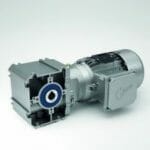Campden BRI report confirms effectiveness of automated mass-flow solution for higher accuracy management of oxygen levels in brewing processes
Precise control over the oxygenation of brewers’ wort is one of the key aspects to manufacturing a high-quality beer with consistent flavour and strength. Bürkert’s Air Dosing System has been trialled by respected independent food & drink technology company Campden BRI and found to deliver on-target results.
The process of creating beer has been refined over thousands of years and modern breweries both large and small offer a wide range of styles, each with its own qualities, taste and strength. The individual characteristics of a beer are defined by amongst other things the yeast strain used and the oxygenation rate of the wort, which needs to be accurately controlled to produce a beer of a consistent high quality.
After the boiled wort has been chilled to fermentation temperature, oxygen is used to start the fermentation process but as the specific gravity of the wort increases, so its ability to absorb oxygen decreases. Breweries aiming to produce higher strength beers for example may need to use pure oxygen rather than air to achieve sufficient levels of oxygen saturation.
About the flavour
Each yeast strain has an ideal oxygen level and if this is not achieved precisely, the optimum fermentation rate will not be achieved. Some of the most important flavour contributors to beer are fermentation products such as esters, higher alcohols and sulphur compounds. The concentrations of these flavour compounds will be altered if the growth characteristics of the yeast are less than perfect.
Striking a balance
Mark Lilley, Field Segment Manager for Bürkert, comments: “The delicate balance in this process presents an opportunity for an automatic system to measure and control the amount of oxygen being introduced to the wort as it is transferred between vessels. However, to achieve credibility within the industry, such a system would need to be independently tested, so we offered the system to Campden BRI, the UK’s leading brewing research centre.”
The Air Dosing System comprises an oxygen mass flow controller, a flowmeter, a dosing control valve and a dissolved oxygen sensor. Together these precision instruments are used to control the oxygenation of the wort as it travels between the wort receiver vessel and the fermenter vessel.
Test conditions
For the test the wort was brewed conventionally from malt extract that included hop extracts and brewing quality water. After the wort had been boiled it was passed through a plate heat exchanger to cool it before the oxygen was added. The wort was analysed using standard brewing parameters, such as present gravity, pH, fermentability and bitterness, to ensure that it was a true representation of a commercial product.
Taking a measure
The oxygen levels and temperature were measured at two points, a sample point in the transfer line and in the fermenter vessel. The measurement probes were calibrated and the Bürkert control module was commissioned before the tests were carried out.
The dissolved oxygen concentration was controlled by adjusting the set point value on the control unit. The aim of the test was to see if a linear adjustment to the setpoint resulted in a representative increase in dissolved oxygen levels. (Please see graph)

The results from three tests showed that both DO probes indicated a linear response to an increase of the setpoint, which would indicate the suitability of this control system for a commercial enterprise.
Essential feedback
To improve the accuracy of the system even more, the next step would be to use the signal from the dissolved oxygen probe in the fermenter vessel as a feedback signal to adjust the setpoint and obtain the exact level of dissolved oxygen required. This offers the opportunity to maintain precise levels of dissolved oxygen which have such a major impact on the quality of the final product.
Mark Lilley concludes: “The work at Campden BRI has proven the feasibility and accuracy of the Bürkert Air Dosing System. As a package it can be developed to suit any commercial business, from a modest craft brewery to a large-scale enterprise.”





